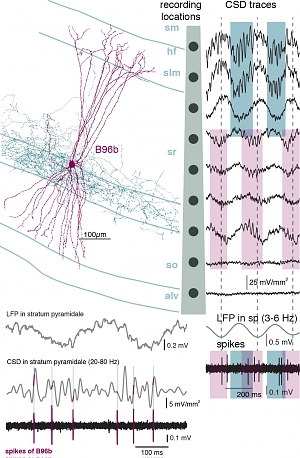Electrical oscillations in the gamma frequency range (30 - 120 Hz) can be recorded from many brain areas including the rodent hippocampus, where they reflect pyramidal cell spike-timing and information encoding. However, several dynamically changing oscillators may contribute independent electrical activities in this range. How do the different oscillators interact and how is their independence maintained in the hippocampal circuit? Lasztóczi and Klausberger recorded, labelled and identified individual neurons by glass electrodes together with isolated constituents of gamma oscillations by current-source-density analysis in vivo. They found two distinct gamma oscillations in the hippocampal CA1 area: gammaperisomatic, a fast oscillation around the pyramidal cell layer coupled to the theta trough and gammaapical tuft, a slower oscillation on theta peaks spatially restricted to the distal dendritic layers. Parvalbumin-expressing, GABAergic basket cells are coupled to gammaperisomatic only, with temporal alignment consistent with their role as local gamma-current generators. The spatiotemporal selectivity of basket cell firing reflects circuit organization and contributes to the regulation and maintenance of independent information flows within the CA1 circuit.
